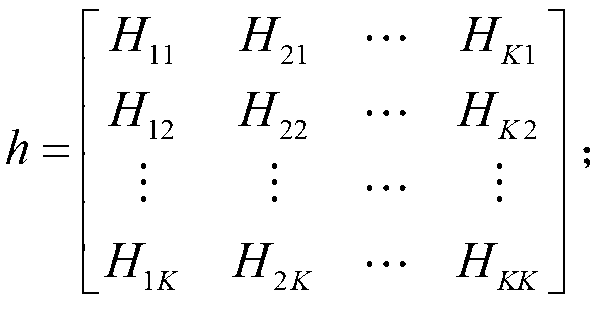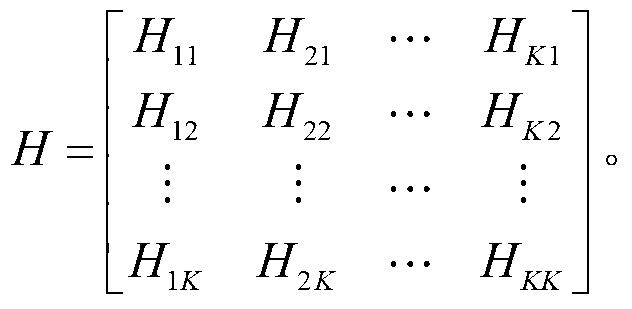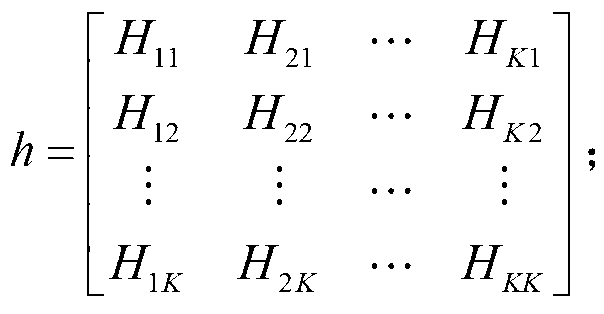Multi-cell and multi-user co-channel interference suppression method based on triangular decomposition and SLNR (Signal Leakage Noise Ratio) algorithm
A multi-cell multi-user, triangular decomposition technology, applied in baseband system components, shaping networks in transmitters/receivers, preventing/detecting errors through diversity reception, etc., can solve the complexity of receiver processing and increase the number of users Issues such as the number of matrices at the receiving end and the computational complexity
- Summary
- Abstract
- Description
- Claims
- Application Information
AI Technical Summary
Problems solved by technology
Method used
Image
Examples
Embodiment Construction
[0022] The present invention will be further described below in conjunction with drawings and embodiments.
[0023] Such as figure 1 As shown, taking 3 cell base stations and 2 users in each cell base station as an example:
[0024] This embodiment takes the LTE downlink multi-cell multi-user network environment as the background, referring to figure 1 In the system model shown, all base stations in the model work on the same frequency resources, such as the macro cell (Marco cell), micro cell (Pico cell), and home base station (Femto cell) covered simultaneously in the LTE system, so the system There is serious inter-cell and intra-cell co-channel interference. Each user in the cell, especially the cell border users, in addition to being able to receive the useful signals of the cell, such as figure 1 The middle signal line indicates that it will also receive co-channel interference signals from other two cells, such as figure 1 The middle arrows indicate that at the same...
PUM
 Login to View More
Login to View More Abstract
Description
Claims
Application Information
 Login to View More
Login to View More - R&D
- Intellectual Property
- Life Sciences
- Materials
- Tech Scout
- Unparalleled Data Quality
- Higher Quality Content
- 60% Fewer Hallucinations
Browse by: Latest US Patents, China's latest patents, Technical Efficacy Thesaurus, Application Domain, Technology Topic, Popular Technical Reports.
© 2025 PatSnap. All rights reserved.Legal|Privacy policy|Modern Slavery Act Transparency Statement|Sitemap|About US| Contact US: help@patsnap.com



